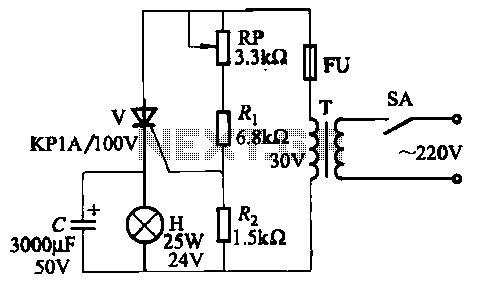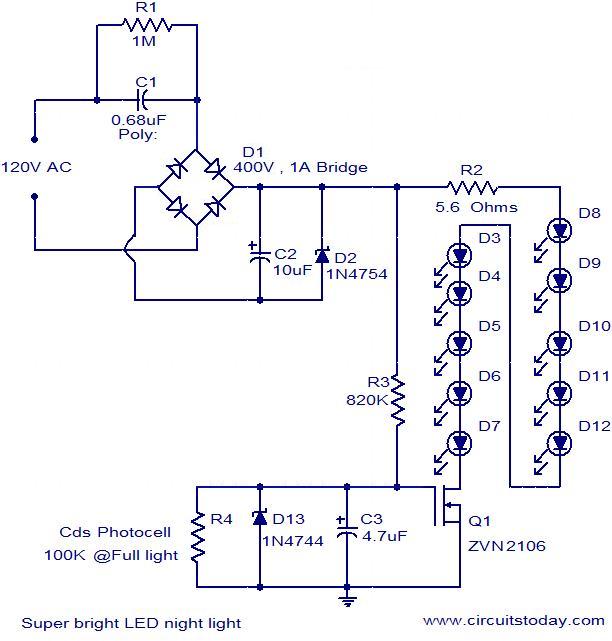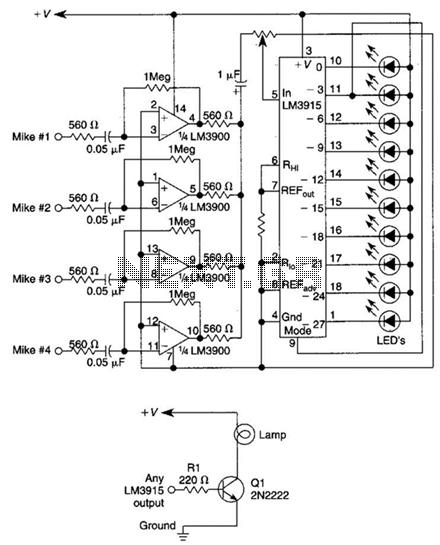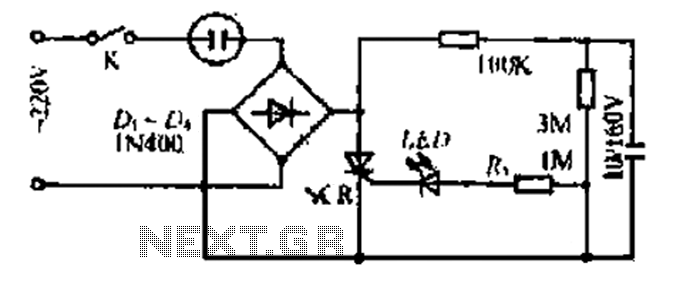
Custom LED Touch Light Fixture

The circuit can be divided into four sections: power supply, touch sensor, microcontroller, and LED driver. The touch sensor is connected to the frame.
The circuit architecture consists of four primary sections, each serving a distinct function to ensure the overall operation of the system.
1. **Power Supply**: This section is responsible for providing the necessary voltage and current to the entire circuit. It typically includes a transformer, rectifier, and voltage regulator to convert the AC mains power to a stable DC output, suitable for the components used in the circuit. The power supply must be designed to handle the maximum load of the circuit while providing sufficient filtering to minimize noise.
2. **Touch Sensor**: The touch sensor is a critical component that detects user interaction. It can be implemented using capacitive or resistive technology, depending on the application requirements. The sensor is mounted on the frame, allowing it to detect touch or proximity. When activated, it sends a signal to the microcontroller, indicating user input. Proper shielding and grounding techniques should be employed to enhance sensitivity and reduce false triggers due to environmental noise.
3. **Microcontroller**: The microcontroller acts as the brain of the circuit, processing input from the touch sensor and controlling the output to the LED driver. It is programmed to interpret the signals from the touch sensor and execute corresponding actions, such as turning the LEDs on or off or adjusting their brightness. The microcontroller requires a stable power supply and may include integrated peripherals such as ADCs or PWM outputs to facilitate communication with other components.
4. **LED Driver**: This section is responsible for controlling the LED outputs based on the commands received from the microcontroller. The LED driver can be a simple transistor switch or a more complex IC designed specifically for driving LEDs. It must be capable of handling the current requirements of the LEDs while providing features such as dimming control and thermal management to ensure reliable operation.
The integration of these four sections forms a cohesive circuit capable of responding to user interactions through the touch sensor and providing visual feedback via the LED output. Proper design considerations, including component selection and layout, are essential to ensure the circuit operates efficiently and reliably.The circuit can be divided into four sections: power supply, touch sensor, microcontroller, and LED driver. The touch sensor is connected to the frame.. 🔗 External reference
The circuit architecture consists of four primary sections, each serving a distinct function to ensure the overall operation of the system.
1. **Power Supply**: This section is responsible for providing the necessary voltage and current to the entire circuit. It typically includes a transformer, rectifier, and voltage regulator to convert the AC mains power to a stable DC output, suitable for the components used in the circuit. The power supply must be designed to handle the maximum load of the circuit while providing sufficient filtering to minimize noise.
2. **Touch Sensor**: The touch sensor is a critical component that detects user interaction. It can be implemented using capacitive or resistive technology, depending on the application requirements. The sensor is mounted on the frame, allowing it to detect touch or proximity. When activated, it sends a signal to the microcontroller, indicating user input. Proper shielding and grounding techniques should be employed to enhance sensitivity and reduce false triggers due to environmental noise.
3. **Microcontroller**: The microcontroller acts as the brain of the circuit, processing input from the touch sensor and controlling the output to the LED driver. It is programmed to interpret the signals from the touch sensor and execute corresponding actions, such as turning the LEDs on or off or adjusting their brightness. The microcontroller requires a stable power supply and may include integrated peripherals such as ADCs or PWM outputs to facilitate communication with other components.
4. **LED Driver**: This section is responsible for controlling the LED outputs based on the commands received from the microcontroller. The LED driver can be a simple transistor switch or a more complex IC designed specifically for driving LEDs. It must be capable of handling the current requirements of the LEDs while providing features such as dimming control and thermal management to ensure reliable operation.
The integration of these four sections forms a cohesive circuit capable of responding to user interactions through the touch sensor and providing visual feedback via the LED output. Proper design considerations, including component selection and layout, are essential to ensure the circuit operates efficiently and reliably.The circuit can be divided into four sections: power supply, touch sensor, microcontroller, and LED driver. The touch sensor is connected to the frame.. 🔗 External reference





